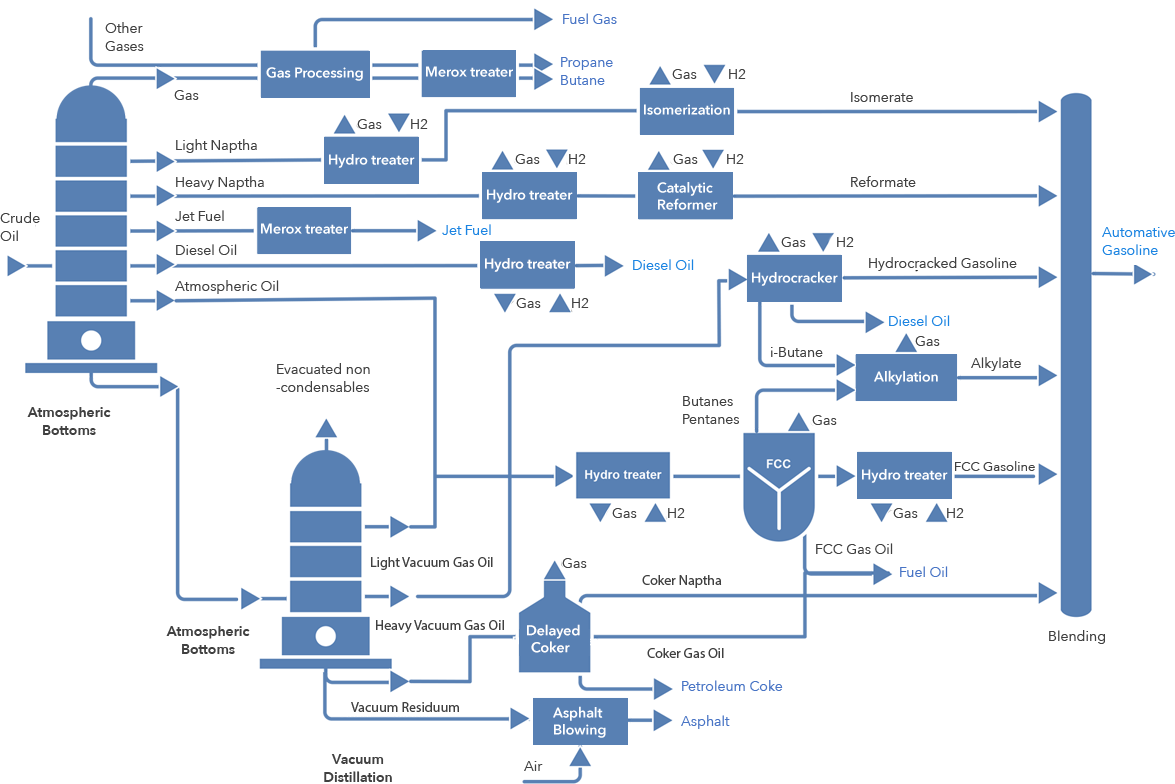Digital Plant
Today, S&C provides a complete system migration to a digital solution/plant/process, including hardware and software, incorporating proprietary OptiRamp software packages for DCS design, configuration, real-time closed loop optimization, scheduling and diagnostic analysis
-
Optimal Business Planning and Logistics
Optimize the plant schedule for production, material use, delivery, shipping, determining inventory levels, operational management. -
Monitoring and Process Control
A distributed control system (DCS) is a platform for automated control and operation of a plant. A DCS combines the following into a single automated system: human machine interface (HMI), logic solvers, historian, common database, and alarm management. S&C technology and tools allows the customer to avoid the enormous cost and risk associated with losing control of a process and leverage innovative technologies that improve operational efficiency and performance.
-
Advanced Process Control, Supervisory Control
Advanced Process Control (APC) is a supervisory control solution that communicates with installed level one distributed control system (DCS) controllers. For processes featuring strong interaction among different units, multi-variable model predictive control (MVPC) offers substantial performance improvements compared with traditional control strategies. -
Manufacturing Operations and Control
Optimal work flow/recipe control. Maintaining records and optimizing the production process, dispatching production, detailed production scheduling, reliability assurance.
OptiRamp Online Advanced Control:
- Assist in achieving optimal operation by tracking energy usage and providing suggested set points to save energy while maintaining the required throughput and safe operation
- Support operator decisions by providing actionable data
- Monitor and predict system flows
- Determine the optimal operating mode of each pumping station and drag reducing agent injection point (for liquid pipeline)
- Improve process stability, allowing operation closer to target, constraints, and optimal values
- Ensure network balancing by monitoring inventory as well as flows to and from the system
- Create dynamic key performance indicators (KPIs)
Blending. Module assists to plan, control, optimize and monitor in-line and batch blending operations:
- Reduce blend turnaround time
- Improve inventory reconciliation
- Acquiring online blend quality analysis
- Minimize material downgrade

Distillation column. OptiRamp provides tight control bottom and tray temperatures to optimize separation, avoid flooding, minimize steam consumption, and maximize yield:
- System manipulates the boiler flow and reflux flow set points to control the bottom and tray temperatures
- The software sensor techniques allow to identify the target product composition from other parameters using OptiRamp dynamic model coefficents
Plant Energy Mangement:
Refineries are complex systems that use tremendous quantities of energy, resulting in high operating expenses. Refineries have two primary systems: power and steam. Power is generated using fuel gas and residual process steam (combined cycle), while steam is generated from boilers and has many consumers, including steam turbines. Energy optimization helps improve energy efficiency, reduce operating costs and CO2 emissions.
- Provides advanced process control (APC) strategies
- Collects and uses data from the DCS using the OptiRamp Virtual Tag Server
- Controls the power and steam systems using the DCS data and regulatory control master blocks and models
- Optimizes all units (process and power) in real time and for multidimensional objective functions
- Integrates operating assets into the total value stream
- Provides Unit Analytics to monitor and optimize unit performance (e.g., boiler and furnace, compressor, turbine)
- Visualizes actionable data (key performance indicators and key operating parameters) through graphics, trends, reports, and notifications, among other tools
- Reduces fuel gas use in real time
Reactors System increases profitability by:
- Determining best operating conditions
- Stabilizing batch temperatures
- Operating closer to theoretical limits
- Improving batch quality
MVPC drives the best, or optimal, estimate of the process states to the desired targets.
- Reconciliation is the process of adjusting the measurements subject to their inherent uncertainty to close the constraints
- The process measurements usually contain substantial systematic errors
- Module allows delivering more accurate information than the initial measurement
- The process measurements usually contain substantial systematic errors
- This approach allows to detect abnormal values and to reduce errors due to the sampling and the measurement
- Material Balance Reconciliation Module is used to improve process performance by supporting off-line process study to evaluate the most economic operating schedule

